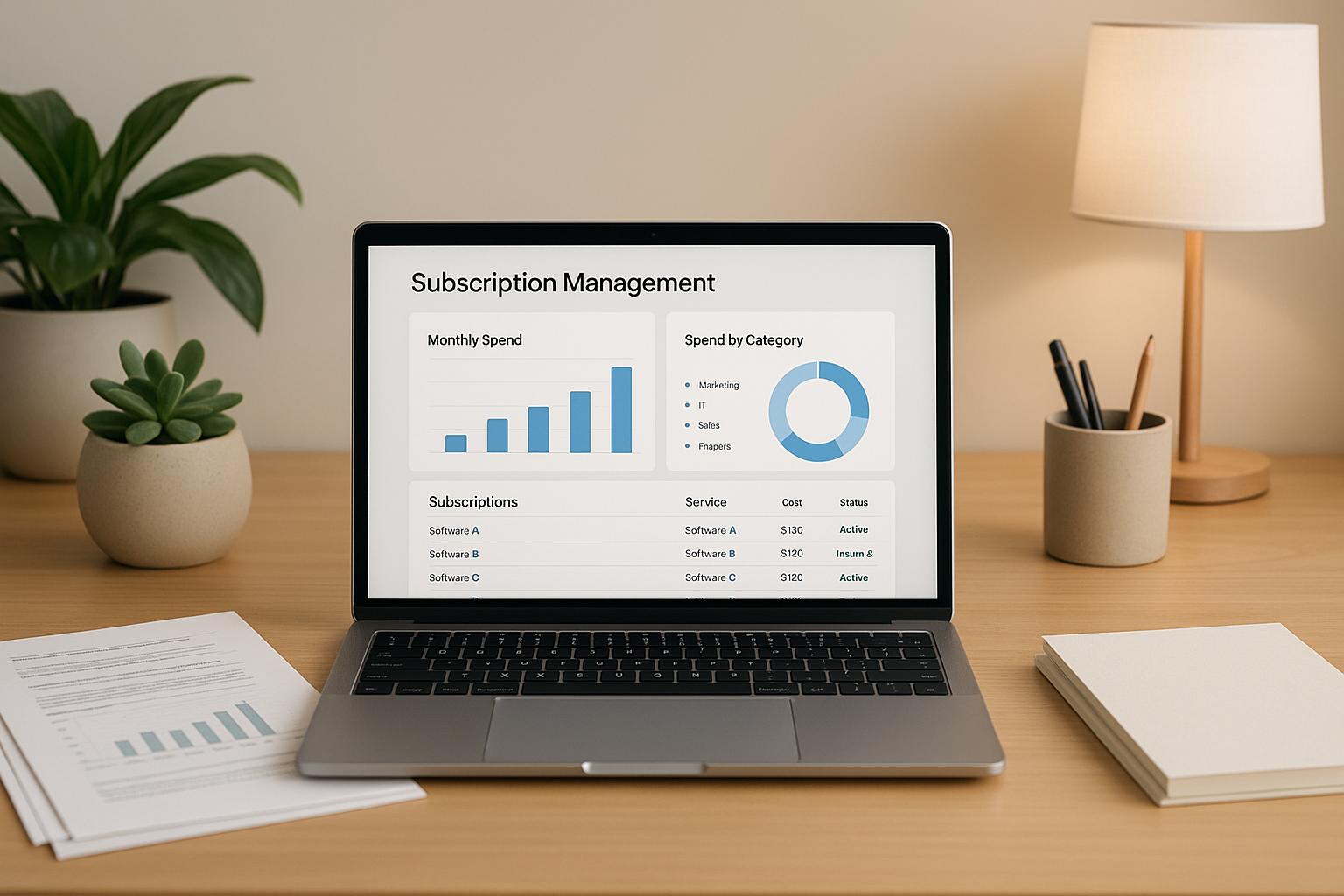Public-Private Joint Ventures in Renewable Energy

Public-private joint ventures (PPJVs) are critical for accelerating renewable energy projects and bridging funding gaps. With over $3.5 trillion needed annually to achieve net-zero emissions by 2050, these partnerships combine government policy support with private sector funding and expertise.
Key insights from the article:
- Funding Needs: Achieving global climate goals requires $1.3 trillion annually by 2030.
- Partnership Growth: Green energy partnerships grew 51% in 2022 and 32% in 2023.
- Successful Models: Structures like Special Purpose Vehicles (SPVs) and Power Purchase Agreements (PPAs) ensure clarity and financial stability.
- Case Studies: Projects like Morocco’s Noor Solar Plant and India’s Solar Mission highlight PPJVs' global success.
- US Policies: The Inflation Reduction Act provides $370 billion in clean energy incentives, boosting PPJV opportunities.
PPJVs offer scalable solutions by sharing risks, leveraging diverse funding sources, and improving project timelines. For growth-stage companies, understanding these frameworks and engaging financial advisory services can unlock substantial opportunities in the renewable energy sector.
Core Structures and Models of Public-Private Joint Ventures
Public-Private Joint Ventures (PPJVs) offer a blend of funding and operational advantages, but to make them work effectively in renewable energy projects, it’s crucial to grasp their legal and operational frameworks. In the U.S., the renewable energy sector leans on structured models that strike a balance between public oversight and private sector efficiency - each tailored to meet specific project and regulatory demands.
Common Structures in Renewable Energy PPJVs
One of the most widely used models in renewable energy PPJVs is the Special Purpose Vehicle (SPV). These legal entities are set up for individual projects, helping partners manage risks and simplify decision-making. By isolating each project’s financial and operational aspects, SPVs ensure smoother collaboration.
Another key model is the Power Purchase Agreement (PPA), which provides long-term revenue predictability. For instance, Duke Energy Sustainable Solutions used a PPA to develop the 60 MW Palmer Solar Project in partnership with Colorado Springs Utilities. The agreement guaranteed the project’s financial stability with a 25-year commitment for electricity generation.
The Build-Own-Operate (BOO) model shifts significant responsibility to private partners. Under this setup, private companies handle construction, ownership, and operations, while public entities maintain oversight through regulatory frameworks and policy guidance. This division of labor allows each partner to focus on their strengths.
These models aren’t just about structure - they set the foundation for how public and private partners collaborate, ensuring clear roles and responsibilities.
Roles of Public and Private Partners
In renewable energy PPJVs, each partner brings unique strengths to the table. Public entities typically handle policy guidance, regulatory facilitation, and land access, often streamlining permitting processes and offering financial incentives. On the other hand, private partners bring capital, advanced technology, and operational expertise. They manage project development, construction, and ongoing operations, while also taking on the risks tied to performance.
"Public-private partnerships (PPPs) are a key lever in diversifying the world's energy resources while ensuring secure, affordable and sustainable access to energy." – Kian Akhavan, Consultant, EMEA
Another essential aspect is intellectual property management. Joint venture agreements must clearly outline who owns existing IP, how technology services are supported, and how any new innovations will be shared. This clarity helps avoid disputes and ensures both parties benefit from any breakthroughs.
Regulatory Compliance and Partner Selection
Navigating regulatory frameworks is a critical part of launching successful PPJVs. Projects must align with federal, state, and local regulations while meeting environmental standards and grid interconnection requirements. These include national renewable energy targets, renewable portfolio standards, and policies governing grid access.
Partner selection is equally important. Beyond financial contributions, companies must evaluate a partner’s technical expertise, regulatory experience, and alignment with project goals. Due diligence now goes deeper, covering areas like emissions compliance, anti-corruption measures, human rights policies, and community engagement.
The Biden Administration’s Inflation Reduction Act has added new layers of compliance, offering nearly $370 billion in clean energy incentives. To fully benefit, partners must understand provisions like prevailing wage requirements, domestic content rules, and environmental justice considerations.
To avoid misalignment, companies are creating comprehensive documents that outline key expectations for legal, tax, governance, and compliance matters before entering partnerships. This proactive approach ensures smoother execution and minimizes risks.
For renewable energy companies looking to grow, mastering these structures and compliance requirements is non-negotiable. With green energy partnerships rising 51% in 2022 and another 32% in 2023, those who can successfully navigate these frameworks are well-positioned to thrive in the rapidly evolving energy sector.
Funding Mechanisms and Financial Considerations
When it comes to renewable energy Public-Private Joint Ventures (PPJVs), the financial structure is all about pulling together various funding sources, each offering its own advantages. For companies eager to tap into both public funds and private investments, understanding these mechanisms is a must.
Primary Funding Sources for PPJVs
Federal tax incentives are a cornerstone of renewable energy financing in the U.S. The Production Tax Credit (PTC) offers up to 2.75 cents per kilowatt-hour (kWh) for certain renewable energy sources, while others receive 1.5 cents per kWh. Meanwhile, the Investment Tax Credit (ITC) provides a 30% credit for qualified clean energy installations, with this benefit available for residential projects from 2022 through 2032.
The Inflation Reduction Act of 2022 brought a significant shift by introducing a direct pay option. This allows entities like local governments, tribal governments, and non-profits to directly benefit from the PTC for equipment placed into service between January 1, 2023, and January 1, 2033. Essentially, it enables these groups to monetize tax credits without relying on third-party tax equity investors.
At the state level, funding initiatives are picking up steam. For example, in 2024, Virginia’s Governor Youngkin launched the Virginia Clean Energy Innovation Bank (VCEIB) with $10 million in state funding. This initiative supports loans and credit enhancements while exploring other financing options like private co-investment and securitization. Similarly, Pennsylvania introduced the Solar for Schools grant program in July 2024, allocating $25 million to fund solar installations on school properties.
Federal loan programs also play a big role, thanks to the Infrastructure Investment and Jobs Act. The U.S. Department of Energy Loan Programs Office now has $62 billion available under Title 17 loans, offering low-cost debt financing for large-scale energy projects, especially when paired with state-level financial support.
Lastly, private equity and venture capital remain critical to the renewable energy sector. These funding sources are particularly appealing for growth-stage companies, as they provide the flexibility and quick access to capital needed to scale proven technologies.
Together, these funding streams create a foundation for effective risk management, which we’ll explore next.
Risk Allocation in PPJVs
For renewable energy PPJVs to succeed, risks need to be assigned to the parties best equipped to handle them. This ensures the project remains financially and operationally viable.
- Construction and technology risks are typically handled by private partners, who have the expertise to manage these challenges.
- Regulatory risks are often shared or retained by public entities, given their closer ties to policy frameworks.
- Revenue and market risks are mitigated through long-term agreements, like power purchase agreements (PPAs).
- Financial risks are usually carried by private partners but can be offset with public guarantees or subsidies.
If risks aren’t allocated properly, it can lead to higher costs and disputes, jeopardizing the project.
The Role of Financial Advisory Services
To complement effective risk allocation, financial advisory services are invaluable for structuring PPJVs and optimizing funding strategies. For companies in the growth stage, navigating these complexities is key to scaling operations.
Financial advisors develop detailed models that integrate federal and state incentives, debt obligations, equity returns, and cash flow projections over 20–25 years. Their expertise extends to several critical areas:
- Fundraising support: Coordinating various funding sources can be challenging. Advisory services, like those from Phoenix Strategy Group, streamline this process by creating integrated financial models and utilizing real-time data.
- Compliance and regulatory guidance: With evolving policies like the Inflation Reduction Act’s direct pay option and its associated wage and apprenticeship requirements, advisors help structure PPJVs to maximize incentives while staying within regulatory boundaries.
- Risk assessment and mitigation: Experienced advisory firms can identify potential issues early, drawing lessons from previous projects to help avoid costly mistakes.
The Virginia Energy Office estimates that energy demand will double by 2035, underscoring the urgency of creating effective PPJV structures. Companies that can skillfully navigate these funding options and manage risks will be well-positioned to seize emerging opportunities in the renewable energy market.
For growth-stage businesses, mastering these funding mechanisms and risk strategies isn’t just important - it’s the foundation for building scalable, long-term operations that attract both public and private investment.
Scalability and Operational Benefits of PPJVs
Public-Private Joint Ventures (PPJVs) bring together public resources and private expertise to expand renewable energy projects at scale and improve operational efficiency. By combining strengths, these partnerships create a framework for faster growth and better performance.
Scaling Renewable Energy Projects
The global demand for renewable energy is enormous. To limit global warming to 1.5°C, the world needs to add 1,000 GW of new capacity every year, requiring over $1.3 trillion in annual investments by 2030. No single organization can tackle this alone.
PPJVs address this challenge by leveraging the risk management and funding strategies discussed earlier. When public entities contribute land, regulatory support, and policy frameworks while private partners provide capital, technology, and expertise, projects can expand much faster than traditional methods.
Take the NEOM Green Hydrogen JV as an example. This collaboration between NEOM, ACWA Power, and Air Products aims to produce 600 tons of carbon-free hydrogen daily using 4 GW of renewable energy. The project secured $6.1 billion in financing out of a total $8.4 billion investment.
Another notable example is HyDeal España, which is set to become one of Europe’s largest hydrogen joint ventures. With 3.3 GW of electrolyzer capacity and 4.8 GW of solar photovoltaic power, this project unites four key players in the hydrogen value chain: DH2 Energy for electrolysis, Enagás for infrastructure, and ArcelorMittal and Grupo Fertiberia as offtakers. By standardizing designs and sharing infrastructure costs, these projects achieve economies of scale.
Operational Benefits in PPJVs
Beyond scaling projects, PPJVs offer operational advantages that improve performance and reduce costs. These partnerships optimize infrastructure, enhance workforce development, and streamline supply chains, benefiting all involved.
One major advantage is the use of existing infrastructure. Public partners often provide access to transmission lines, substations, and grid connections, saving private developers from building these from scratch. This reduces project timelines and upfront costs.
Workforce development also sees a boost. Public entities can create training programs and partner with universities and technical schools, while private companies bring specialized expertise. Together, they build a skilled workforce that supports long-term success.
Supply chain efficiencies are another key benefit. PPJVs can coordinate procurement across multiple projects, mitigating the impact of supply chain disruptions. Advanced tools like satellite imagery and geospatial analysis also make site assessments faster and more cost-effective.
Shared resources further reduce maintenance costs. For example, drone and sensor inspections can be conducted across multiple projects, while integrated energy storage and proactive maintenance strategies enhance efficiency. These operational benefits align with the financial and risk-sharing advantages previously discussed.
PPJVs vs. Fully Public or Private Models
To understand where PPJVs shine, it’s useful to compare them with fully public and fully private models. Each has its own strengths and limitations:
| Aspect | PPJVs | Fully Public | Fully Private |
|---|---|---|---|
| Funding Access | Combines public funds, private capital, loans, and revenue-sharing | Relies on government budgets and public debt | Private equity, venture capital, and commercial debt |
| Risk Management | Risks are shared based on expertise | Government shoulders most risks | Private sector absorbs all risks |
| Speed to Market | Moderate - requires coordination but benefits from combined expertise | Slower due to bureaucratic hurdles | Faster decision-making but may face regulatory delays |
| Technical Expertise | Blends public policy knowledge with private technical skills | Limited to government capabilities | High technical expertise but lacks policy insights |
| Long-term Stability | High - combines policy support with private efficiency | Stable but constrained by budgets | Subject to market volatility and policy shifts |
| Transparency | Moderate - public oversight with private flexibility | High transparency and accountability | Limited public transparency |
| Innovation Potential | High - merges public research with private R&D | Constrained by government innovation cycles | High but focused on profitable outcomes |
Despite their potential, only about 3% of public climate investments and private financing flows into Public-Private Partnerships (PPPs) today. This suggests a huge opportunity to expand their use in renewable energy.
PPJVs are particularly suited for projects that prioritize outcomes over direct management. They offer flexibility to adapt to new technologies, such as bifacial solar panels, which can increase energy generation by up to 11%, or wind technologies, where capacity factors range from 30% to 45%. Compared to rigid public or private models, PPJVs are better equipped to integrate these advancements.
"Public-private partnerships (PPPs) can offer a rare win-win-win for businesses, governments and strategic energy objectives."
- Kian Akhavan, Consultant, EMEA
For growth-stage companies, PPJVs open the door to larger projects and stable revenue streams, offering more flexibility than fully public models and less risk than purely private ventures. Partnering with experienced financial advisors, like Phoenix Strategy Group, can help these companies navigate the complexities of PPJVs and set up for long-term success.
sbb-itb-e766981
Long-Term Impacts and Case Studies of PPJVs
Public-Private Joint Ventures (PPJVs) in renewable energy aren’t just about short-term wins - they create lasting changes by transforming energy systems, stimulating economic growth, and speeding up the shift to cleaner energy. These long-term benefits add to the immediate perks like operational efficiency and scalability. Real-world examples show how collaboration between public and private sectors can deliver meaningful results.
Measurable Impacts of PPJVs
Over time, the benefits of PPJVs grow, making a real difference in both environmental and economic terms. These partnerships contribute to energy security by increasing the use of renewable energy and reducing reliance on fossil fuels.
PPJVs play a key role in boosting renewable energy capacity, cutting CO₂ emissions, and improving overall environmental conditions. They also bring economic advantages by creating jobs, transferring technology, and developing local industries. From manufacturing and installation to ongoing operations and maintenance, these ventures generate employment across the renewable energy sector. They also stimulate local economies by driving demand for services and infrastructure.
The scale of the impact becomes even clearer when you look at global needs. Achieving the 1.5°C climate goal requires around $5 trillion in annual global investments. In Europe alone, meeting the target of a 55% reduction in greenhouse gases by 2030 will require an additional €336 billion annually. Yet, only 3% of public climate investment and 3% of private finance currently go into public-private partnerships. This highlights a massive opportunity to expand these collaborations.
Case Studies in Renewable Energy
Examples from around the world show how PPJVs work across different technologies and scales:
- Morocco's Ouarzazate Solar Power Station (Noor): This ambitious solar project, developed through a partnership between the Moroccan government and private investors, produces enough energy to power over a million people. Public entities like the World Bank and the African Development Bank provided financial support alongside private investments.
- India's National Solar Mission: By teaming up with private solar companies, the Indian government has set bold goals for solar energy production. Policies such as solar power purchase agreements have enabled the private sector to build and manage solar farms, helping India become one of the fastest-growing solar energy markets globally.
- Tajikistan's Pamir Private Power Project: A 25-year agreement allowed for the modernization of an outdated hydroelectric utility. With help from the Aga Khan Fund for Economic Development, the World Bank, IFC, and SECO, this project now supplies renewable energy to 226,000 people in Tajikistan and 28,500 in northern Afghanistan (as of 2016).
- Burkina Faso's FasoBiogaz Project: FasoBiogaz SARL operates the first industrial biogas plant connected to the SONABEL power grid. It turns slaughterhouse waste and other organic materials into biogas and digestate. The biogas supplies electricity to the national grid, while the digestate is sold as biofertilizer, creating multiple revenue streams.
- Tuvalu's Solar Power Project: The e8 project in Tuvalu features a 40 kW solar system that meets about 5% of Funafuti's peak electricity demand and 3% of the annual household consumption managed by TEC. Its main goal is to reduce fuel dependency and support renewable energy adoption in this small island nation.
Lessons Learned and Best Practices
Several key practices have emerged as essential for the success of PPJVs:
- Risk Sharing Strategies: Success depends on balancing financial risks and rewards. Governments often provide tax breaks, grants, or subsidies, while private companies bring investment capital and expertise in managing large-scale projects.
- Policy and Regulatory Support: A stable regulatory framework - through measures like feed-in tariffs, renewable portfolio standards, or carbon pricing - reduces uncertainty and encourages private-sector involvement.
- Technology and Infrastructure Integration: Governments can focus on building necessary infrastructure, like transmission lines, while private partners contribute advanced technology and operational expertise.
- Long-Term Contracts: Agreements that offer predictable returns while balancing flexibility with stability are critical for attracting investment.
- Community and Stakeholder Engagement: Involving local communities, environmental organizations, and other stakeholders early in the process can help avoid obstacles and build lasting support.
For companies looking to enter the renewable energy space through PPJVs, these lessons highlight the importance of understanding both the technical and financial sides of such projects. Businesses that can successfully navigate these complex partnerships while maintaining operational excellence will stand out in the competitive renewable energy market. Partnering with experienced financial advisors like Phoenix Strategy Group can help companies build the necessary expertise to thrive in large-scale PPJVs.
Key Insights for Growth-Stage Companies
Building on the financial and operational frameworks discussed earlier, these insights provide growth-stage companies with a clear path to maximize the potential of public-private joint ventures (PPJVs). In 2021, global renewable energy capacity additions surpassed 300 GW, and projections suggest this could climb to 500 GW this year. According to the International Renewable Energy Agency (IRENA), the world will need to add 1,000 GW of new capacity annually by 2030 to maintain global warming below 1.5°C - an effort requiring an average yearly investment exceeding $1.3 trillion.
The partnership landscape is evolving at a rapid pace. Data from the Ankura JV Index shows a 51% year-over-year increase in new green energy partnerships in 2022, followed by another 32% rise in 2023. This reflects a major shift in how renewable energy projects are funded and executed.
Key Takeaways for Growth-Stage Companies
These trends highlight actionable strategies for companies at the growth stage looking to seize PPJV opportunities:
- Scaling Challenges: PPJVs allow companies to pool resources, share capital, and spread risks, making it easier to scale technologies that are still costly to implement at larger levels.
- Market Entry: Strategic partnerships can open doors to new markets, particularly where a local partner is essential or where companies can benefit from regional subsidies. A great example is the Western Green Energy Hub, a green hydrogen joint venture involving CWP Global, InterContinental Energy, and the Mirning People. This partnership not only ensures local participation but also grants the Mirning People equity and a permanent board seat.
- Risk Management: By sharing capital investments, partners can significantly lower risks and speed up project timelines. This approach has been successfully applied in several high-profile renewable energy projects.
- Securing Project Economics: Collaborating with both producers and offtakers ensures a stable financial foundation. For instance, the ACORN CCS JV - featuring Shell, Storegga, Harbour Energy, and Northstream Midstream Partners - demonstrates how partnerships across the energy value chain can bring carbon capture and storage projects to life.
- Evaluating Partners: A structured evaluation process is crucial. Companies should assess whether a partner is truly necessary, ensure alignment in capabilities and culture, and review the partner’s track record in previous joint ventures.
- Expanding Collaboration: Broadening partnerships across the value chain can unlock new development opportunities, extending beyond traditional joint ventures.
- Formalizing Processes: Establishing clear partnership procedures is essential. A cross-functional Pre-and-Post Close Transaction Requirements document can outline expectations for compliance, legal, tax, treasury, accounting, and governance matters. Flexible legal agreements can help prevent potential misalignments.
How Financial Advisory Services Can Help
Managing the complexities of PPJVs in renewable energy often requires financial expertise that many growth-stage companies lack internally. Financial advisors play a critical role in areas like financial modeling, due diligence, and exit strategy planning - key elements for executing successful partnerships.
- Strategic Deal Structuring: Advisors help optimize financing structures to attract investors while ensuring compliance with lender and government requirements. Their expertise in securing tax credits and subsidies can significantly improve project economics.
- Risk Management: Sophisticated financial modeling enables companies to structure deals effectively, mitigate risks, and maintain compliance across various jurisdictions.
- Comprehensive Support: Partnering with experienced financial advisors, such as Phoenix Strategy Group, provides growth-stage companies with end-to-end support. From deal evaluation and financial modeling to fractional CFO services and M&A advisory, these advisors help build the financial foundation needed for large-scale renewable energy projects.
- Post-Close Management: Advisors also assist in setting up governance structures and management processes to ensure partnerships are well-managed. Regular post-close reviews, such as those conducted at 6-month or 1-year intervals, can capture valuable lessons and refine future strategies.
The renewable energy sector is growing at an extraordinary pace, presenting immense opportunities. Companies that navigate the complexities of partnerships and leverage specialized financial advisory services will be well-positioned to thrive in the trillion-dollar energy transition shaping the next decade.
FAQs
How do public-private joint ventures support the growth of renewable energy and help achieve global sustainability goals?
Public-private joint ventures (PPJVs) have become a key driver in expanding renewable energy initiatives by blending the strengths, resources, and funding power of both public and private sectors. These collaborations make it possible to fast-track large-scale renewable energy projects while ensuring they remain both financially practical and scalable.
By combining public funds with private investments, PPJVs tackle the significant upfront costs and minimize financial risks, making such projects more appealing to investors. They also encourage innovation and deliver lasting results by drawing on the efficiency of private enterprises and the reliability of public institutions. Companies like Phoenix Strategy Group play a crucial role in these efforts, offering strategic planning and financial advisory services that help secure funding, streamline processes, and support long-term growth in renewable energy ventures.
What financial strategies make public-private joint ventures successful in renewable energy projects?
Public-private joint ventures (PPJVs) play a crucial role in advancing renewable energy projects by blending the unique strengths of both sectors. They tap into private capital to share the financial costs and risks tied to large-scale investments, making these ambitious projects more manageable. To encourage private sector participation, tools like bonds, grants, and venture capital are often utilized.
These strategies channel substantial funding into renewable energy while easing the financial strain on public entities. By promoting long-term collaboration and stability, PPJVs help speed up the development and expansion of renewable energy initiatives, paving the way for sustained progress and innovation in the sector.
What can growth-stage companies do to succeed in public-private joint ventures (PPJVs) for renewable energy projects?
To excel in public-private joint ventures (PPJVs) for renewable energy projects, growth-stage companies need to prioritize developing solid partnerships with both government bodies and private investors. These relationships are key to accessing funding, distributing risks, and aligning projects with regulatory requirements.
Focusing on creative financing approaches and customizing business strategies to leverage policy incentives can give companies a competitive edge. By remaining flexible and emphasizing scalability, businesses can more effectively navigate the shifting renewable energy market in the U.S. and position themselves for sustained growth.




